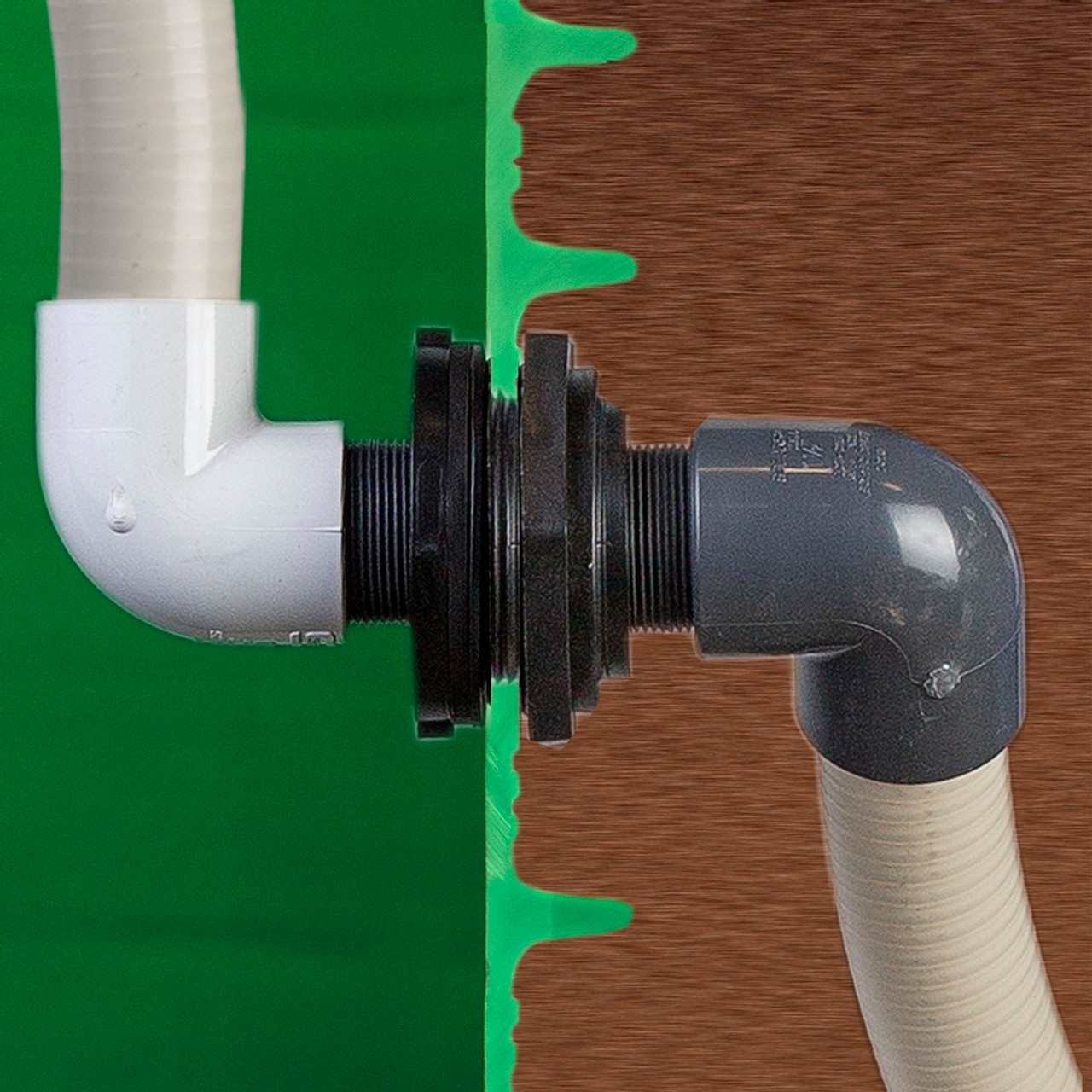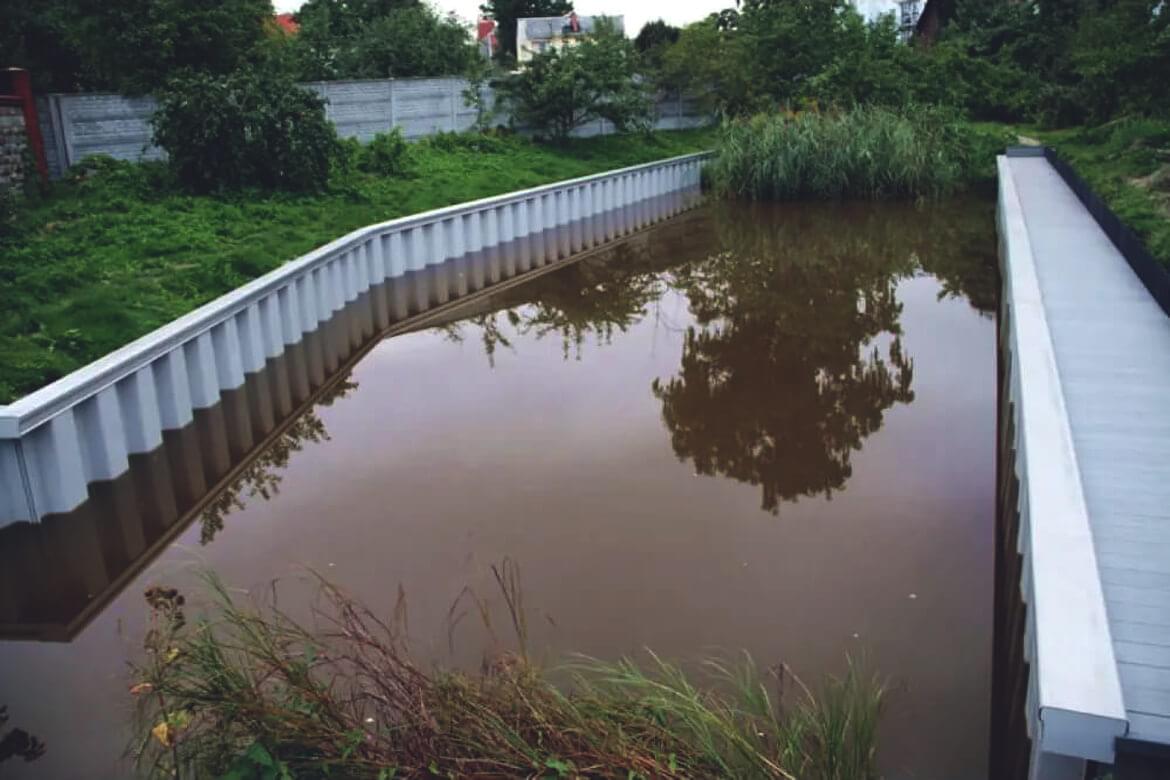Checking Out the Numerous Uses Bulkhead Frameworks in Modern Style
Bulkhead frameworks play a considerable function in contemporary design, offering both useful and aesthetic purposes. They can specify spaces, boost storage options, and enhance lighting. In industrial setups, they work as prime focus that show brand identity - Bulkhead on Lake Livingston. Additionally, their integration typically sustains sound management and sustainable practices. Understanding the complete extent of their applications discloses much concerning modern design patterns and individual experience. What innovative uses of bulkheads might arise in the future?
Defining Bulkhead Frameworks
Bulkhead frameworks play an important role in modern-day architecture, offering as important components in various building styles. These frameworks are normally specified as increased ceilings or platforms, typically used to hide mechanical systems, wiring, or pipes. Bulkheads can be located in both residential and industrial setups, where they provide a seamless blend of capability and aesthetics. Their design can integrate lighting fixtures and various other ornamental components, boosting the overall visual allure of a room.
Typically created from products such as steel, timber, or drywall, bulkheads can be tailored to fit the building design and needs of the building (Bulkhead on Lake Livingston). They serve not just to conceal unsightly infrastructure however likewise to produce defined areas within open rooms. By taking care of the circulation of a room, bulkheads contribute to the spatial company, making them a considerable aspect of contemporary architectural technique. Their interpretation encapsulates both sensible and aesthetic measurements.
Useful Applications in Residential Layout
Bulkhead structures play a necessary duty in residential style by helping with area optimization strategies that maximize usable areas. They contribute aesthetic design aspects that boost the visual appeal of living areas. Furthermore, these frameworks give important architectural assistance options, making sure the integrity and safety of the home.
Room Optimization Techniques
As contemporary residential designs significantly prioritize reliable use room, innovative strategies emerge to optimize functionality without compromising appearances. One popular strategy involves the assimilation of bulkhead structures, which can define areas while providing crucial storage space solutions. These frameworks can be used to produce vertical storage space units that enhance both company and accessibility. Furthermore, multi-functional furnishings, such as exchangeable couches and foldable tables, complements bulkhead styles, enabling spaces to adapt to varying needs. Open floor strategies additionally maximize spatial circulation, motivating versatility in operation. Incorporating integrated shelving and recessed lights within bulkheads also adds to a streamlined setting, ensuring that every square inch of room is utilized efficiently and sympathetically within the overall style.
Visual Design Components

Architectural Assistance Solutions
In contemporary domestic layout, an effective structural support solution is necessary for preserving the stability of rooms while optimizing layout and performance. Bulkhead frameworks play a substantial duty in this situation, acting as both assistance and dividing aspects. They can conceal mechanical systems, such as plumbing and electric circuitry, while giving reinforcement to the ceiling and flooring systems. By tactically putting bulkheads, architects can create specified locations within open flooring strategies, boosting usability without compromising architectural security. Furthermore, these structures can fit lighting fixtures, contributing to both aesthetics and practicality. To sum up, bulkhead frameworks are indispensable in property layout, using functional support options that boost both the capability and visual appeal of living rooms.
Enhancing Visual Appeals in Business Areas
When commercial rooms accept innovative bulkhead frameworks, they not just define physical limits but likewise considerably boost the overall looks of the environment. These building elements act as visual centerpieces, attracting interest and producing a feeling of intrigue. By incorporating diverse materials such as wood, steel, or glass, bulkheads can reflect a brand's identification and mission, contributing to a natural design.
The calculated placement of bulkheads can control light and shadow, adding depth and dimension to or else level areas. This interplay can transform a commercial location right into an inviting ambience, motivating client involvement. Furthermore, using color and texture in bulkhead design can evoke certain feelings, improving the overall client experience. Eventually, the thoughtful assimilation of bulkhead structures raises the aesthetic charm of business spaces, making them not just practical yet additionally visually enchanting, thus fostering a long-term impact on site visitors.
Acoustic Performance and Sound Monitoring
Effective acoustic performance plays a crucial duty in modern-day style, especially within business areas where audio administration is essential. Bulkhead frameworks can greatly improve acoustic qualities by absorbing audio, lowering echo, and mitigating sound transfer between locations. These attributes are especially advantageous in atmospheres such as workplaces, restaurants, and movie theaters, where clear communication and an enjoyable auditory experience are paramount.
The tactical positioning and style of bulkheads can assist produce sound-buffer zones, effectively isolating loud locations from quieter ones. Products used in bulkhead construction, such as soft surfaces and acoustic panels, add to their sound-dampening capacities. In addition, the incorporation of bulkheads permits the combination of sound-absorbing components without compromising aesthetic allure. By attending to acoustic performance, designers can develop harmonious settings that enhance comfort, enhance user experience, and advertise productivity, making bulkheads a crucial part in the layout of contemporary commercial rooms.
Integrating Bulkheads for Reliable Room Utilization
Although often overlooked, the assimilation of bulkheads in building style can substantially boost area application in contemporary structures. These architectural components serve multiple useful functions, providing a means to conceal mechanical systems, electrical wiring, and pipes without endangering visual appeals. By purposefully positioning bulkheads, designers can produce defined locations within open floor plans, thus facilitating much better organization and flow.
Additionally, bulkheads can incorporate storage remedies and lighting attributes, making best use of the functionality of otherwise lost upright area. In domestic setups, they might delineate areas such as kitchens or living areas, while in commercial spaces, they can boost the efficiency of layouts by clearly noting paths and workspace.
Eventually, the thoughtful assimilation of bulkheads contributes to a much more visually enticing and well organized setting, permitting for versatile spaces that can evolve with the requirements of their owners. This approach not only maximizes room however also promotes a much more harmonious interaction in between form and function.
Bulkheads in Public Architecture

Building Visual Enhancements
While lots of architectural elements go for capability, bulkheads in public style offer a dual function by boosting visual allure. These structures often create aesthetic passion via their layout, incorporating flawlessly with bordering aspects. By utilizing various materials, structures, and shades, bulkheads can add to a distinct identification for public areas, such as airports, galleries, and collections. Their tactical placement helps to define locations, assisting visitors while adding deepness to the total style. In addition, bulkheads can emphasize illumination, producing dynamic environments that alter throughout the day. This aesthetic improvement not only elevates the site visitor experience yet also promotes a feeling of place, making bulkheads an important factor to consider in modern public design. Generally, bulkheads embody the fusion of kind and feature.

Structural Assistance Solutions
As engineers seek cutting-edge means to improve the architectural integrity of public rooms, bulkheads become important elements in the layout and building process. These frameworks supply important assistance, especially in locations based on heavy foot web traffic or vibrant tons. By dispersing weight uniformly, bulkheads assist stop structural failing while permitting flexible design alternatives. In huge venues, such as stadiums and convention centers, bulkheads are usually incorporated right into the general architectural framework, making certain stability and security. In addition, they can facilitate the consolidation of energies and mechanical systems, adding to the performance of space usage. Ultimately, bulkheads stand for an essential option in contemporary public design, strengthening both capability and security in community-focused atmospheres.
Environmental Protection Procedures
Integrating environmental management measures right into public design has come to be increasingly vital as urban developers focus on sustainability together with structural support. Bulkhead frameworks offer a double objective in this regard, functioning as barriers against disintegration and flooding while at the same time boosting the aesthetic allure of metropolitan landscapes. Their layout usually includes natural environments such as plants, which can boost air top quality and supply environments for wildlife. Furthermore, bulkheads can be engineered with permeable materials that enable water absorption, decreasing overflow and advertising groundwater recharge. This integration of environmental considerations not only preserves the atmosphere however additionally promotes neighborhood durability versus environment modification. By using bulkheads properly, engineers add to sustainable city advancement that straightens with modern environmental goals.
Future Patterns in Bulkhead Design
Arising trends in bulkhead layout reflect an expanding focus on sustainability, advancement, and functionality in modern architecture. Designers are progressively incorporating environmentally friendly products, such as recycled compounds and bioplastics, to minimize ecological impact. Furthermore, the assimilation of wise modern technology is becoming common, making it possible for bulkheads to offer multi-functional functions, including power storage space and environment control.
In urban setups, modular bulkhead systems are gaining grip, using adaptability in design and convenience of installment. These systems can be adapted to numerous landscapes, permitting reliable room application. Furthermore, visual considerations are progressing; bulkheads are now being designed to improve aesthetic appeal, usually incorporating artistic elements that reverberate with regional culture.
As environment durability ends up being a concern, future bulkhead designs will likely focus on flood protection and stormwater management, making sure architectural stability while addressing ecological challenges. This change represents a holistic method to architecture that satisfies both human requirements and eco-friendly obligations.
Frequently Asked Concerns
What Materials Are Typically Utilized for Bulkhead Building?
Usual materials for bulkhead building include concrete, steel, wood, and composite materials. These choices supply durability, structural stability, and resistance to environmental elements, making her response them suitable for various applications in building and construction and engineering tasks.
Just How Do Bulkheads Affect Building Energy Efficiency?
Bulkheads improve building power performance by offering thermal insulation and reducing air leakage (Bulkhead on Lake Livingston). They assist keep interior temperature levels, consequently decreasing home heating and cooling down demands, ultimately bring about lower power expenses and improved ecological sustainability
Are There Any Kind Of Building Regulations Specific to Bulkhead Frameworks?
Yes, developing codes certain to bulkhead structures exist, varying by location. These regulations typically address safety, architectural stability, and access, ensuring that bulkheads satisfy required requirements for building and layout within a provided territory.
Can Bulkheads Be Quickly Modified or Gotten Rid Of Later On?
Bulkheads can usually be customized or eliminated, depending upon their layout and building. Nevertheless, such changes may call for mindful planning and adherence to structure codes to ensure structural honesty and safety and security are kept throughout the process.
What Are the Prices Associated With Setting Up Bulkhead Frameworks?
The costs associated with installing bulkhead structures can differ substantially, usually influenced by products, design intricacy, and labor. Generally, expenditures vary from moderate to high, depending on the task's particular requirements and place.
Bulkhead frameworks play a crucial function in contemporary architecture, offering as important parts in numerous building styles. Bulkhead structures play a crucial duty in domestic layout by facilitating room optimization techniques that maximize usable areas. Frequently overlooked, the integration of bulkheads in building layout can substantially boost room application in modern-day structures. As designers seek innovative methods to improve the architectural stability of public spaces, bulkheads arise as essential parts in the layout and building process. The costs linked with setting up bulkhead structures can vary considerably, commonly influenced by materials, design complexity, and labor.